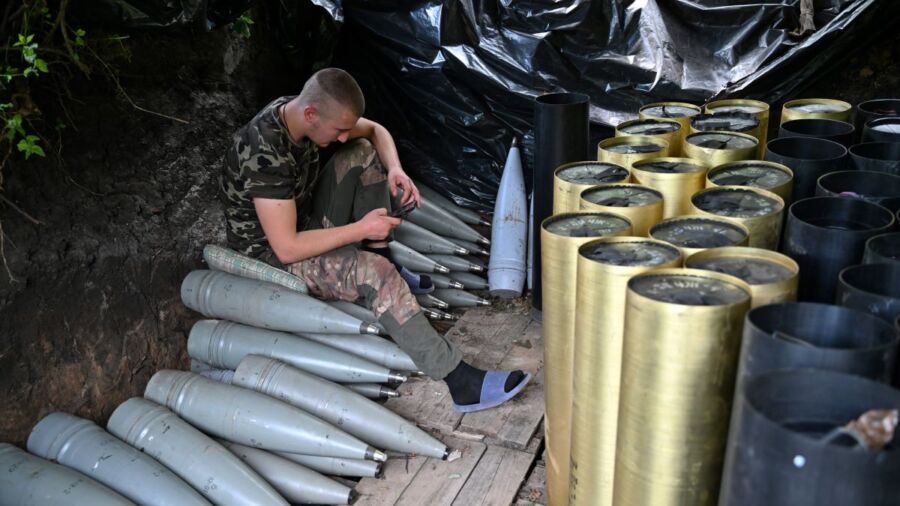While defined as “dual purpose,” the “hundreds of thousands” of cluster munitions the United States is sending to Ukraine have one but function: Annihilate everything within its 7.5-acre blast spread.
Used since at least World War II because of their low-tech efficiency and flexibility—and now banned by 123 countries—they can be launched from aircraft, drones, packed into missiles, and used to target men and machines in artillery strikes.
The dual-purpose improved conventional munitions (DPICMs) that the Biden administration on July 7 formally agreed to send to Kyiv as part of an $800 million military assistance package—the 42nd authorized since Russia’s February 2022 invasion—will come from a 3-million round stockpile idling since the U.S. Army began phasing them out in 2016.
The DPICMs are canisters fitted into 155m Howitzer artillery shells that can be timed to explode at set elevations above or on a target.
Each canister contains 88 bomblets with a lethal range of about 107 square feet, depending on the height they are released. The bomblets can be “shaped” to target tanks or armored vehicles, or timed to explode closely to the ground to unleash a storm of shrapnel that turn trenches into “killing zones,” determined a 2019 study by the British think tank, the Royal United Services Institute.
And that is exactly what Ukraine needs the cluster munitions to do—rout Russians from minefield-moated trenches in its counteroffensive to drive Vladimir Putin’s forces from its territory.
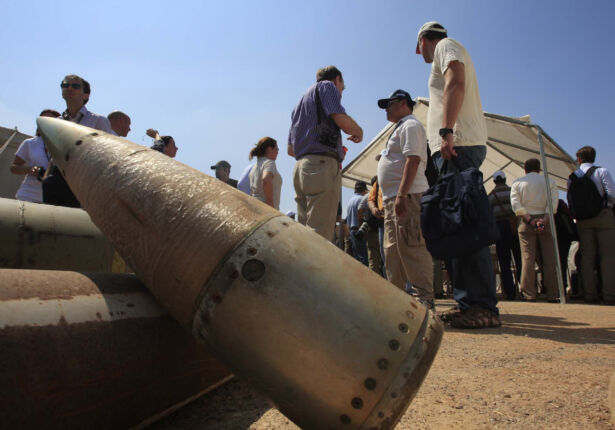
Transfer Violates Treaties, Violates US Law
The Biden administration has been pressured for more than a year by Ukrainian President Volodymyr Zelensky and bipartisan critics in Congress to provide cluster munitions, but until July 7, it maintained that international accords and U.S. law prevented such a transfer.
Because not all the bomblets, or submunitions, in every canister, always explodes, these munitions can leave a minefield of “duds” that can ignite years later. According to an August report by the Landmine and Cluster Munition Monitor, 97 percent of all cluster munition casualties are “after-action” civilians. In surveys where ages of victims were reported, 66 percent were children.
Under the Convention on Cluster Munitions, a 2008 international treaty signed by 123 nations in Oslo, Norway, cluster munitions such as DPICMs are banned. The United States, Russia, and China are not among treaty signatories, but the United States does not export cluster munitions in arms sales to allied nations.
Plus, the administration noted U.S. law prohibits transferring DPICMs if bomblet failure, or “dud,” rates top 1 percent. In order for it to send the aging stockpile to Ukraine, Mr. Biden is waiving that requirement and allowing a “dud” rate of up to 2.35 percent.
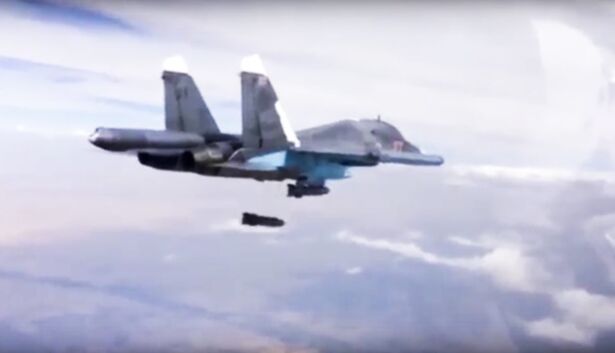
Three Justifications
By the time Under Secretary of Defense for Policy Colin H. Kahl made the formal announcement regarding the inclusion of DPICMs in the $800 million Ukraine assistance package in a mid-afternoon Pentagon press conference, national security adviser Jake Sullivan had commented, and Secretary of State Antony Blinken had issued a statement on the transfer.
Mr. Sullivan laid out the same three points in justifying the provision that Mr. Kahl would later elaborate on.
“First, we base our security assistance decision on Ukraine’s needs on the ground, and Ukraine needs artillery to sustain its offensive and defensive operations,” he said at the White House. “Artillery is at the core of this conflict. Ukraine is firing thousands of rounds a day to defend against Russian efforts to advance and also to support its own efforts to retake its sovereign territory.”
Mr. Sullivan said the United States has provided Ukraine with “a historic amount of unitary artillery rounds,” and Ukraine has been using them nearly as quickly as they’ve received them, prompting concerns about shortfalls and making that 3-million DPICM round stockpile look even better in a pinch while production accelerates.
“We’ve already seen substantial increases in production, but this process will continue to take time, and it will be critical to provide Ukraine with a bridge of supplies while our domestic production is ramped up,” he said. “We will not leave Ukraine defenseless at any point in this conflict. Period.”
Mr. Sullivan said the second justification is that Russia has been using cluster munitions since the day it invaded Ukraine in February 2022.
“Russia has been using cluster munitions with high dud or failure rates of between 30 and 40 percent,” he said. “The cluster munitions that we would provide have ‘dud’ rates far below what Russia is doing is providing not higher than 2.35 percent.”
“During the first year of the conflict alone,” Mr. Kahl said, “Russia fired cluster munitions deployed from a range of weapons systems have likely expended tens of millions of submunitions or bomblets across Ukraine.”
A United Nations investigation has confirmed Russia’s use of cluster munitions, and NATO Secretary General Jens Stoltenberg has declared that use “inhumane.” But the U.N. probe also maintains Ukraine has used cluster-type munitions received from Turkey and Pakistan.
Mr. Sullivan said the third reason is “Ukraine is committed to post-conflict de-mining efforts to mitigate any potential harm to civilians. And this will be necessary regardless of whether the United States provides these munitions or not because of Russia’s widespread use of cluster munitions.”
“The Ukrainian government has offered us assurances in writing on the responsible use of DPICMs, including that they will not use the rounds in civilian populated urban environments, and that they will record where they use these rounds, which will simplify later de-mining efforts,” Mr. Kahl said, noting the United States has already invested more than $95 million in Ukraine de-mining activities.

Part of $800 Million Aid Package
Mr. Kahl raised a fourth justification that Mr. Sullivan alluded to: Any and all munitions are needed by the Ukrainians right now.
The DPICM stockpile will ensure “the Ukrainian military has sufficient artillery ammunition for many months to come,” he said.
The DPICM munitions are part of an $800 million military assistance package that also includes 105m and other types of 155m artillery shells, Patriot air defense system missiles, High Mobility Artillery Rockets, Bradley infantry fighting vehicles, Stryker armored personnel carriers, precision aerial munitions, demolition munitions, and systems for obstacle-clearing.
Mr. Kahl said it was the 42nd presidential drawdown on the Ukraine Security Assistance Initiative (USAI) fund established in the wake of Russia’s invasion to allow the Pentagon and administration to purchase weapons and munitions for Ukraine outside the nation’s defense budget.
Since February 2024, he said, the United States has committed more than $41.3 billion in military assistance to Ukraine.
Mr. Kahl would not say, exactly, how many DPICMs are headed for Ukraine, other than “hundreds of thousands,” and would not approximate when they would arrive other than to say they’d be used in the underway counteroffensive.
Hints Since Spring
Administration and Pentagon officials have hinted since spring that the Biden administration was rethinking its opposition to sending cluster munitions to Kyiv, especially with Ukraine reporting fierce resistance by dug-in Russians.
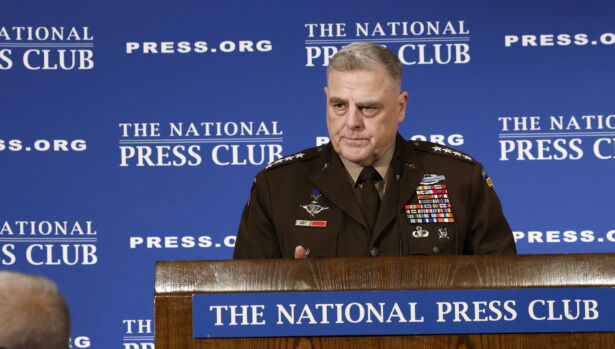
Joint Chiefs of Staff chair Gen. Mark Milley in a June 30 address to the National Press Club said one reason why the administration was considering lifting its objections is because Ukraine was already using cluster munitions.
“The Ukrainians have asked for it, other European countries have provided some of that, the Russians are using it,” Gen. Milley said. “I’m not going to get out in front of decision making by the president. That would be a decision by the president. As far as decision-making goes, we as part of the process, we consider all kinds of options.”
Deputy Assistant Secretary of Defense for Russia, Ukraine, Eurasia Laura Cooper, told the House Foreign Affairs Committee on June 22 that “our military analysts have confirmed DPICMs would be useful, especially against dug-in Russian positions on the battlefield.”
“If Ukraine is unable to make significant progress, the Biden administration’s continued slow-rolling of critical weapons systems will be largely to blame,” said Rep. Michael McCaul (R-Texas) during the hearing.
U.S. European Command (USEUCOM) Army Gen. Christopher Cavoli told the House Armed Services Committee on April 26 that the DPICMs would be particularly effective against “targets are gathered into dense formations.”
This prompted Chair Rep. Mike Rogers (R-Ala.), a vocal Ukraine backer to call on the Biden “to stop being so reluctant to provide Ukraine with the capabilities it needs to be successful. His hesitation over being too escalatory has only prolonged the war and driven up cost in terms of dollars and lives.”
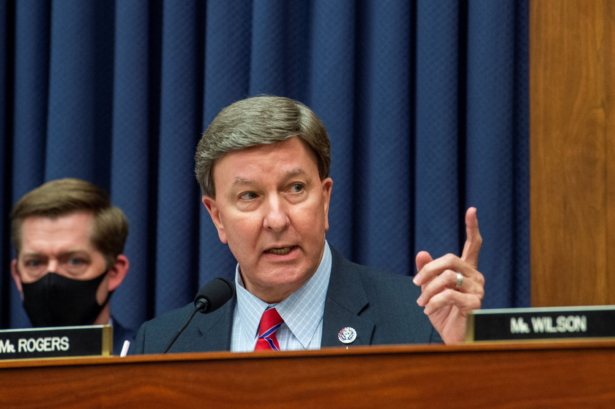
Mr. Rogers, who has also lobbied the administration to provide Ukraine with F-16s, voted against a proposed $500 million USAI boost in the proposed Fiscal Year 2024 budget, suggesting the best way to defeat Mr. Putin’s armies is to “send excess cluster munitions to Ukraine.”
Think tanks and policy analysts were also calling for the Biden administration to send DPICMs to Ukraine.
In May, Hudson Institute experts argued the U.S. should equip Kyiv with cluster munitions to penetrate Russian defenses and serve as an artillery force multiplier.
Hudson Institute Keystone Defense Initiative Senior Fellow and Director Rebeccah Heinrichs, at a July 6 Center for Strategic & International Studies (CSIS), said the indecision can be attributed to the fact that not all 31 members of NATO share a common assessment “of the nature of the Russia threat” and what victory for Ukraine means.
Some members of the alliance are “taking a much more cautious approach and are concerned about horizontal or perhaps vertical escalation,” she said. “And so, they’ve been more unwilling to provide the kinds of weapons that Ukraine still insists that they need—the cluster munitions, the long-range strike systems, bigger drones, etc.”
Praise And Appeals
Key senators were among those voicing support for the munitions transfer.
“For Ukrainian forces to defeat Putin’s invasion, Ukraine needs at least equal access to the weapons Russia already uses against them, like cluster munitions,” Sen. Tom Cotton (R-Ark.) said in a statement reposted on Twitter. “Providing this new capability is the right decision—even if it took too long—and is one I’ve long supported.”
Senate Foreign Relations Committee ranking member Sen. Jim Risch (R-Idaho), in a July 6 statement on Twitter—before the announcement— called the transfer “good news, but long-overdue.”
“My colleagues & I have been calling on the Biden Admin to send these & other critical weapons to Ukraine for months,” Sen. Risch said. “The admin shouldn’t have to be pressured into doing the right thing every time.”
Human Rights groups and the U.N. had lobbied against sending Ukraine cluster munitions. In May, 14 U.S. senators sent Mr. Biden and Mr. Sullivan letters acknowledging the munitions could help Ukraine but “the humanitarian costs and damage to coalition unity of providing U.S. cluster munitions would outweigh the tactical benefits.”
The Office of the United Nations High Commissioner for Human Rights lamented the administration’s decision shortly after it was announced.
“Cluster munitions scatter small bomblets over a wide area, many of which fail to explode immediately,” spokesperson Marta Hurtado said. “They can kill and maim years later. That’s why use should stop immediately.”
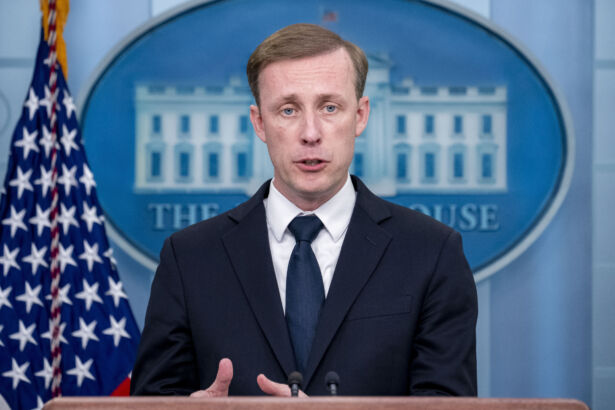
Mr. Sullivan said it was a decision no one wanted to make.
“We recognize the cluster munitions create risk of civilian harm from unexploded ordnance. This is why we deferred the decision for as long as we could,” he said. “But there is also a massive risk of civilian harm if Russian troops and tanks rollover Ukrainian positions and take more Ukrainian territory and subjugate more Ukrainian civilians.”
Mr. Blinken suggested human rights groups, administration critics, and the U.N. address their concerns with Mr. Putin.
“Russia started this unprovoked war against Ukraine. Russia could end it at any time by withdrawing its forces from Ukraine and stopping its brutal attacks against Ukraine’s cities and people,” he said. “Until Russia does so, the United States and our allies and partners will stand united with Ukraine, for as long as it takes.”
From The Epoch Times

